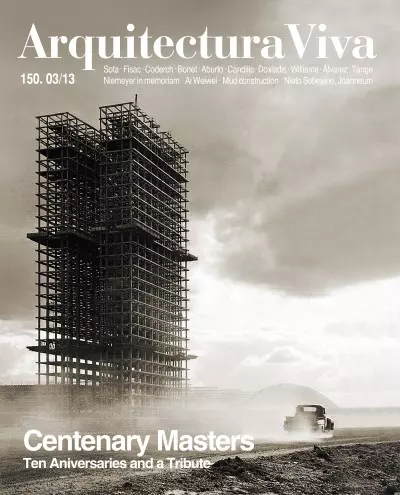

(Osaka, 1913 - Tokyo, 2005)
The Kagawa gymnasium, which resembles a traditional Japanese ship, opened in 1964. It was shut in 2014 due to problems with its structure not being earthquake-resistant as well as its low ceilings, which made it unsuited for use in some sports compet
The opening ceremony for the 2020 Olympic Games in Tokyo has taken place in the Japan National Stadium, a work of Kengo Kuma, which presents a sophisticated composition of timber trusses and vegetation in its galleries. Sport events mark our everyday
“Dear Corbu, everything we have fought for is paralleled in ancient Japanese culture.” With this, written on a postcard of Ryoanji (the legendary karesansui zen garden of fifteen rocks, built in the 15th century as a metaphor of time) sent in 1954, G
A link between East and West, Kenzo Tange was one of the authors of Japan’s transformation in the wake of World War II, and the master of a whole generation of architects.
We begin to celebrate the centenaries of those who were our masters, and the many anniversaries in 2013 prompts a pixelated portrait of architecture after the First World War with ten biographies of figures born on the eve of the Second. In my case,
2013 is a year of centenaries. We commemorate the birth of ten masters: five Spaniards, one Japanese, one Greek, one Azerbaijan-French and two Argentinians. The Spaniards (José Antonio Coderch, Alejandro de la Sota, Miguel Fisac, Antoni Bonet i Caste
Anuncia muy bien su título el contenido de este libro, con el que el autor añade nuevos capítulos a su ya nutrida colección de textos de arquitectura. Tres son a mi entender los territorios que habitualmente explora como escritor Antón Capitel: la ar
A mediados del siglo XIX, Japón inició un proceso de apertura que coincidió con su configuración como nación moderna y con el interés de los occidentales por su cultura y sus objetos. Desde entonces, la tensión entre las esencias del país asiático y
(1913-2005) “I am very fortunate to have witnessed Japan’s transformation from the devastation of the postwar to the opulence of today.” Kenzo Tange, who died on 22 March 2005, was no mere witness. He played a leading role in the reconstruction of h
«Me topé con los dibujos y una fotografía de la maqueta que Le Corbusier presentó para el Palacio de los Sóviets. Me sentí completamente cautivado por el diseño que, desprovisto de todo ornamento, era, sin embargo, pasmosamente bello. De este modo em
If seen in small images, what sets Jodhpur, the blue oasis in the Indian Rajasthan desert, apart from the famous 1:500 model of the future Shanghai? One could say that color is more important than density in differentiating these two Asian cities, lo
El museo de Hiroshima es una de las obras que más me inspiraron durante mi carrera. Los sencillos pabellones en la explanada vacía, ahuecada por la bomba del Enola Gay, y la bóveda que enfoca la ruina me parecían un ejercicio extraordinario y delicad
«Tras una serie de edificios en la línea lingüística de Le Corbusier, Tange se introduce en la poética de las grandes dimensiones (...) Un grupo dirigido por Kenzo Tange redacta en 1960 el plan de Tokio, al que se anticiparon las propuestas del grupo
Kenzo Tange With the winning of this prize, granted yearly by the Japan Art Society since 1989, Kenzo Tange (1913) has the world's biggest architectural awards to his name, including the Pritzker and the AIA and RIBA gold medals. All in recognition o

